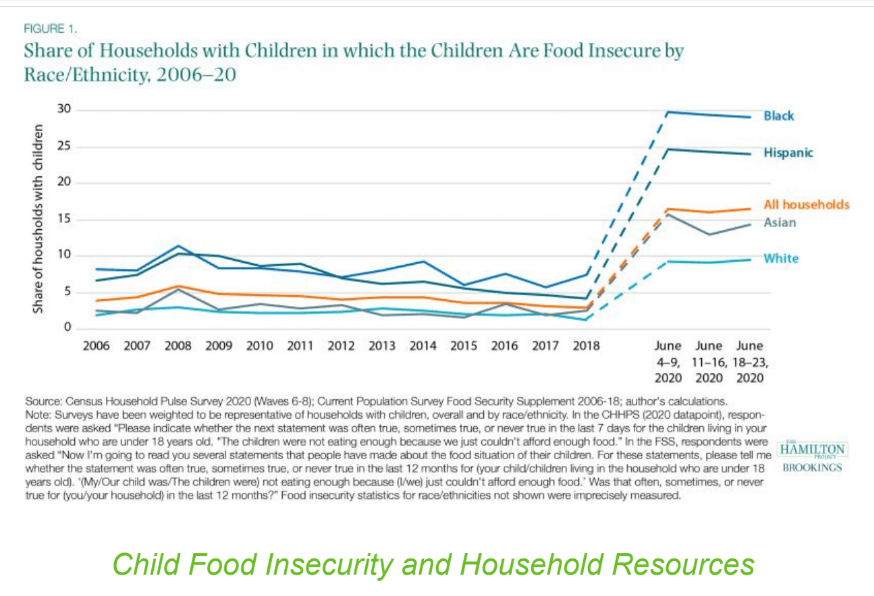Vidya Sethuraman
India Post News Service
The COVID-19 pandemic has put a massive strain on most people’s lives around the world thanks to layoffs, pay cuts, and more—leaving millions of Americans unemployed and struggling to make ends meet The Covid-19 pandemic has led to a dramatic 60% increase in hunger and food insecurity in America.
At least 54 million people in the US face hunger, close to 60 million who went hungry in the Great Depression of 1929. Food banks regularly see long lines — 40% are seeking food assistance for the first time. How did we reach this point and what policies needed to address both the current crisis and the structural issue of hunger in America were discussed at the video conference conducted by EMS on Aug 28.
 Hunger is defined as a feeling of discomfort or weakness caused by lack of food, coupled with the desire to eat. More than 54 million Americans may find themselves staring at sparse or empty plates before 2020 is over, according to Feeding America, the nation’s largest hunger-relief organization. That’s 17 million more Americans struggling with food insecurity than before the pandemic. That’s about twice the population of New York City.
Hunger is defined as a feeling of discomfort or weakness caused by lack of food, coupled with the desire to eat. More than 54 million Americans may find themselves staring at sparse or empty plates before 2020 is over, according to Feeding America, the nation’s largest hunger-relief organization. That’s 17 million more Americans struggling with food insecurity than before the pandemic. That’s about twice the population of New York City.
But the pandemic is exacerbating food insecurity, challenging not only American families but also Feeding America with a host of operational difficulties, including fewer volunteers and reduced retail donations because of store closings. Feeding America, a network made up of the nation’s largest hunger-relief organizations, reported in May “for the first time in recent memory, decisions are being made that weigh economic cost against the lives of people in the United States.” It concludes in part that regardless of the outcome, “the most vulnerable members of society are in position to fare the worst.”
This massive need for food has occurred despite the benefits provided by the $2 trillion CARES Act passed back in March, which included expanded unemployment and SNAP benefits, funding for food banks, eviction moratoriums, and more. As a result, food banks and other organizations have been contorting themselves to meet unprecedented demand—and make their efforts sustainable in the long run.
But current Census data indicate that the crisis is even worse than Feeding America’s estimate. The Census Bureau’s weekly surveys during the pandemic (analyzed by the Center on Budget and Policy Priorities) show that 38-46 million people including 9-17 million children aren’t getting enough to eat now in a recent week (Center on Budget and Policy Priorities).
Families with children are being hit hardest. Based on a different question in the weekly Census surveys, analysis by Lauren Bauer from the Hamilton Project found that in a recent week about 14 million children (that is, the children in one-sixth of U.S. households) are not getting the food they need. This is five times higher than before the pandemic. African-American, Latino, and Asian families with children have been hit even more severely than White families with children, said David Beckmann, President Emeritus, Bread for the World.
The inequality in food systems that women faced before COVID-19 is now exacerbated. As the primary food providers for their families, women are responsible for as much up to 90% of food preparation in households and often handle grocery shopping, according to the report. But we also see that women often eat last and they eat least when there’s a crisis.
Increase nutrition assistance (right now, increase the SNAP benefit level and extend Pandemic EBT in the COVID relief bill now under negotiation). People should call or email their senators about this right now, said David Beckmann, President Emeritus, Bread for the World. Raise the minimum wage and strengthen tax credits for low-income workers and invest in African-American economic opportunity and provide a path to citizenship for undocumented people will help this crisis. The panelists urged the citizens to host a food and fund drive; donate to the Regional Food Bank or Community Food Bank to combat this crisis.
Communities have come into action on their own and are doing well in assisting the hungry, but more government intervention may be needed.







